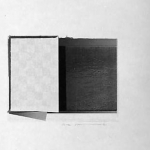1996
Michael Wutz reviews Bruce Clarke's Dora Marsden and Early Modernism: Gender, Individualism, Science
Sandy Baldwin on music in the new media ecology.
De Witt Douglas Kilgore reviews Stanley Aronowitz, Barbara Martinsons, and Micahael Menser's Technoscience and Cyberculture (1996).
August Tarrier reviews the 1994 film, Bad Girls.
Dodie Bellamy gets to the "dirty parts" of contemporary fiction.
Martin Rosenberg discusses Kiki Smith's feminist visual art and cognitive science.
Having women in power won't automatically make for caring, sensitive environmental policies as Stacy Alaimo implies in her review of Carolyn Merchant and Val Plumwood.
Lisa Joyce critiques the rash of historical fiction by women, circa 1996.
Cris Mazza sends in her introduction to the follow-up volume of Chick-Lit, No Victims.
Linda Brigham reviews the Spring and Fall 1995 issues of Cultural Critique.
Todd E. Napolitano on the kitsch of on-line journals, most of which have flashed and disappeared since they were panned here, in the Fall 1996 ebr.
Elisabeth Sheffield on the implications of the anthology that helped to put the term "postfeminsim" into circulation.
Joe Amato on the Social Text controversy.
Christopher Knight on Stanley Fish's Professional Correctness.
Greg Dyer steals glances at women('s) writing on the World Wide Web.
George Landow reviews Patchwork Girl by Shelley Jackson.
Lidia Yukman describes the experience of teaching people of differing backgrounds.
